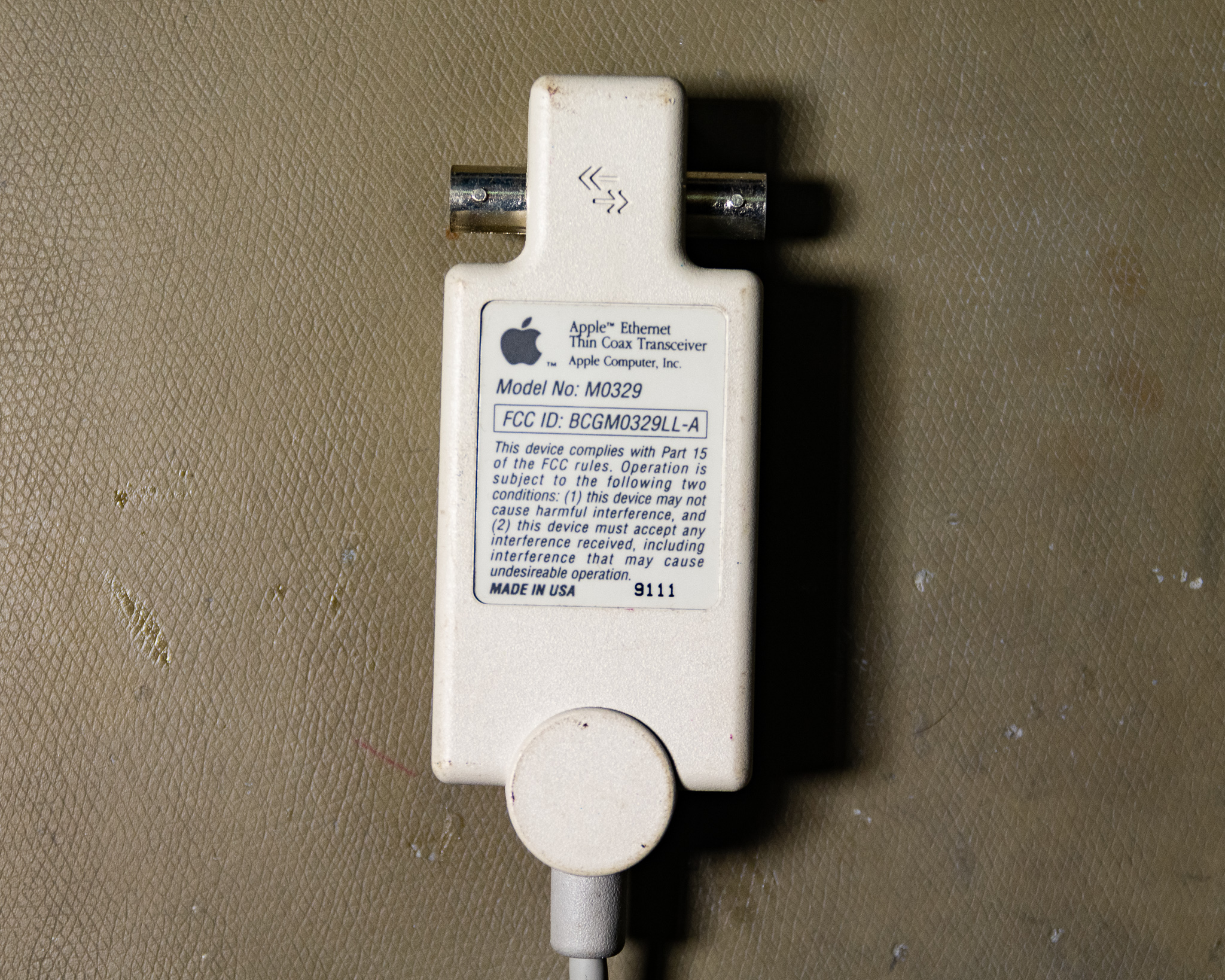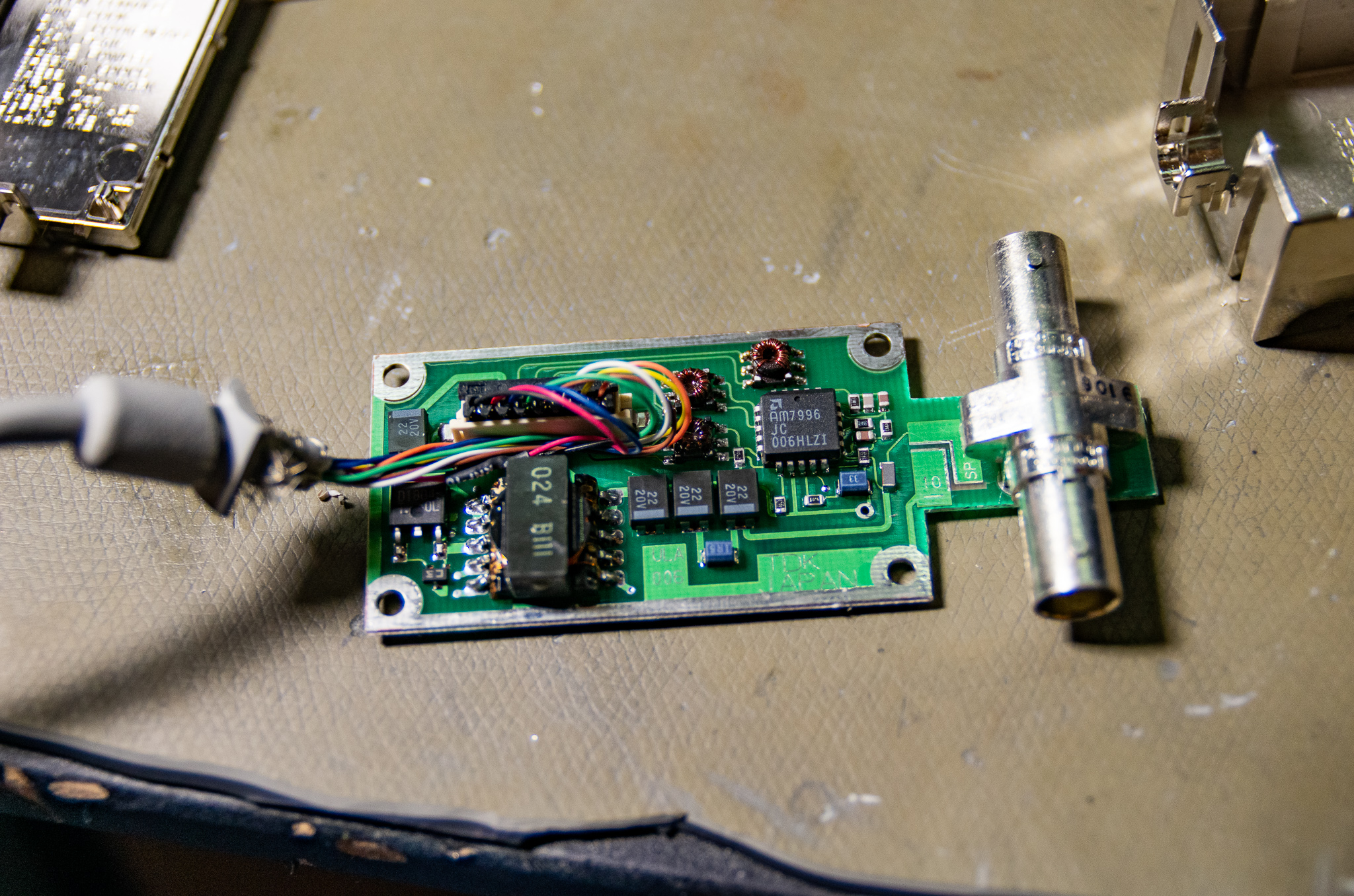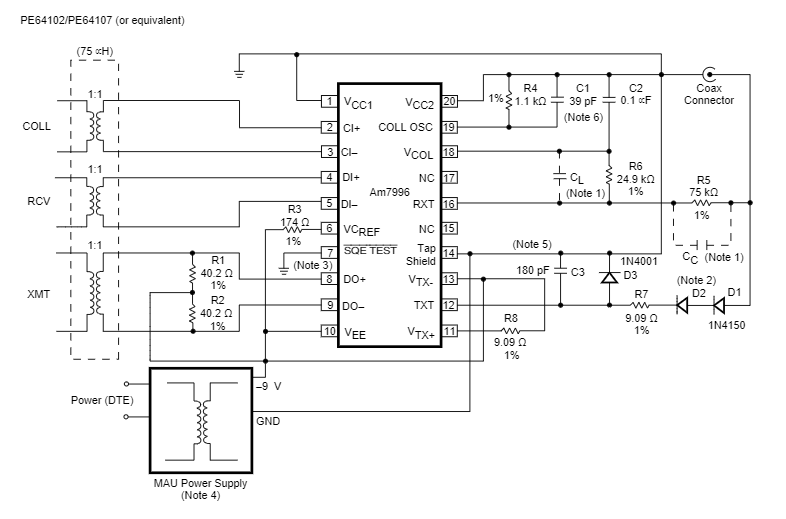Apple M0329 10BASE2 AAUI Transceiver

I had bought an AAUI 10BASE2 transceiver, mainly to get the AAUI cable for use with another device.
Inside were no major surprises, but still hopefully interesting.
I couldn't dig up anything of significance on the transceiver, it's a "generic" part in that you can get AUI/AAUI transceivers from many brands and they all work identically.
AAUI is an Apple/IBM specific variant of AUI with a high density MDR14 connector replacing the standard 15 pin D-Sub. This was likely made to work better with laptops and other smaller devices, though it didn't last too long before 10BASE-T replaced all other Ethernet variants.
The only difference of note aside from pinout of that the power supply for the transceiver is 5 V in AAUI, and it's 12 V for AUI. For 10BASE-T transceivers the 5 V is more convenient, while the higher voltages are perhaps more useful for other media types.

The device appears to have been made in 1991.

Externally the device is a plastic box. The plastics are quite hard, and aren't yellowed, suggesting they might be a non ABS type.

Disassembly
The device itself is quite hard to disassemble, it appears that the device was glued or welded together.

Prying the outer shell apart reveals an inner EMI shield case, which is made of a very shiny metallized plastic. It can be pried apart a bit more easily than the rest of the device.
Note that this is an isolated device; the BNC shields is not connected to the metallic case or cable shield. Also note that there is no exposed metal on the entire device except for the BNCs when the case is installed.
Surprisingly, the inside of the metal shield reveals what is presumably the names of the design team.


The Hardware
The device itself contains a single PCB, as expected.
There is a clever trick included in this adapter that I think was part of the "FriendlyNET" family, which meant that you didn't need BNC T-adapters, the adapter was built into the transceiver.
Looking closely at the BNC plug, we can see a small spring contact in the dielectric, this is not something you normally see in BNCs.

This contact will connect an internal 50 Ω terminator unless both ports are connected, meaning that the user didn't need to worry about termination at all if only FriendlyNET transceivers were in use.

The main PCB appears to have been made by TDK according to the branding.

Note the isolation gap near the BNC, the exposed tinned copper on both ends presumably effects a spark gap to prevent damage due to overvoltage.

The main chip on the board is an AMD AM7996, and the rest of the board is mostly signal isolation transformers (3⨉), and an isolated power supply.
The special BNC plug was made by Amphenol, if anyone was wondering where to get one. They're probably completely obsolete now.
Next to the BNC on the bottom you can see the extra pin, which connects to the BNC center conductor, and in this configuration will connect 2 100 Ω resistors to the BNC shield when closed, terminating the bus.
The circuitry on the bottom layer is probably some diodes, and the bottom left side is probably the power supply components.
The package types used are very typical for 80's/90's Japanese manufacture, especially the weird flat leaded transistor packages. Unsurprisingly, the blue inductors are TDK components.
The epoxied components are capacitors, measuring a total of ~7 nF. This is likely done to EMI reasons. The reason the components are epoxied is likely for high voltage clearance - while 1206 components can handle high voltages, their geometry means that you need a conformal coating to meet e.g. 1000 V ratings on a PCB (according to IPC standards).
AM7996
The AM7996 runs the entire show, it's a "IEEE 802.3/Ethernet/Cheapernet Transceiver", making the Cheapernet name official.

This device runs off a -9 V isolated supply, and is designed to talk directly to the Ethernet bus through some diodes.